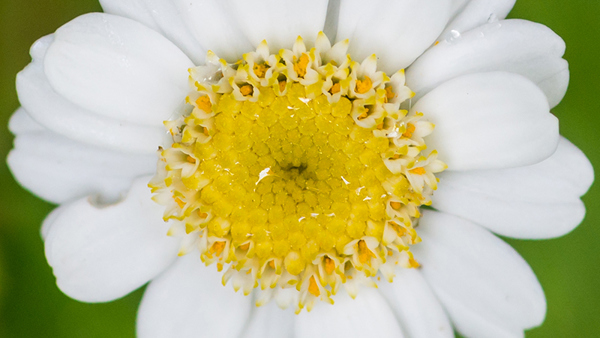Yates Account
Join now
Create a Yates account today!
Sign up to join the Yates Garden Club for monthly e-mails packed with seasonal inspiration, tips for success & exclusive promotions.
Plus if you’re a Garden Club member you can take part in the Yates Growing Community - a blog to share successes, get advice & win prizes in fun challenges along the way!

Forgot password
Enter the email address associated with your account, and we'll email you a new password.

Feverfew (Tanacetum parthenium) is widely used as a perennial medicinal herb which is known to help reduce headaches and inflammation pain. Not only is it a wonder herb, it also looks fantastic with its bountiful amount of white daisy like flowers on a small bush. Great for the herb garden, in pots or flowering beds.
How to grow Feverfew in a garden
- Choose a spot in the garden that receives full sun to light shade and prepare the planting area well by digging in Yates Thrive Natural Blood & Bone with Seaweed.
- Fill starter pots or trays with Yates Black Magic Seed Raising Mix. Sow seeds by scattering them thinly on top of the seed trays or directly where they are to grow, and barely cover them with some Yates Black Magic Seed Raising Mix. Firm down and water with a fine mist spray.
- Water gently and keep moist through germination period.
- The seedlings are ready to transplant when they are approximately 5-7cm in height.
- When transplanting them into your prepared garden bed, ensure seedlings are well spaced – at least 40-45cm apart. Water in well.
- Mulch with an organic mulch, such as bark chips, woodchip or pea straw.
- When buds appear, feed with Yates Thrive Rose & Flower Granular Plant Food. TIP: For an added boost apply Yates Thrive Roses & Flower Liquid Plant Food.


How to grow Feverfew in a pot
- Choose a pot at least 200mm wide and deep. Position in full sun.
- Fill the chosen pots with quality potting mix, such as Yates Premium Potting Mix.
- Plant directly into the pot by scattering the feverfew seeds thinly on top of the seed trays or directly where they are to grow, and barely cover them with some Yates Black Magic Seed Raising Mix. Firm down and water with a fine mist spray.
- Water gently and keep moist through germination period.
- Feed every 1 to 2 weeks with Yates Thrive Roses & Flower Liquid Plant Food. TIP: For an added boost apply Yates Thrive Natural Fish & Seaweed+ Plant Food Concentrate.
Growing tips
Lightly prune back flowers to encourage further growth and blooms.
- The fresh leaves can be consumed with other food which is known to reduce headaches, pain and inflammation.
- Do not ingest this plant if pregnant or breast feeding.
More Plants
Orange trumpet vine, with its brilliant cascading masses of orange tubular flowers, is one of the most spectacular winter flowering climbers.
Spring Stars
Spring Stars are a versatile addition to any garden with delightful lavender-blue, star shaped blooms.
Flax
Flaxes (Phormium spp.) are highly versatile plants which don't mind swampy or dry conditions. Great for large pots or planted en-masse in garden beds.
Proteas
Not just any old blossom, protea flowers are blooms with attitude. If you can give them full sun and reasonable drainage, proteas will love you.
Yates Premium Potting Mix
A premium potting mix, ideal for all potted plants and shrubs, including ornamentals, fruit trees, vegies and herbs.
Yates Thrive Natural Blood & Bone with Seaweed
A certified organic garden input boosted with NZ Seaweed to gently nourish plants, enrich the soil and encourage a strong healthy root system.
Yates Thrive Rose & Flower Granular Plant Food
Specially formulated to grow all types of flowers. With high potassium for large & abundant flowers, added calcium & iron for stronger flowers.
Yates Thrive Natural Fish & Seaweed+ Plant Food Concentrate
A complete plant food enriched with natural fish, seaweed, humates, molasses and more - boosted with NPK to improve plant and soil vitality.
















Share
Share this article on social media